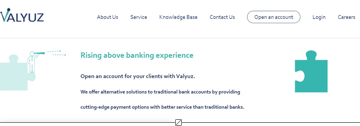Have you ever felt like your heart might leap out of your chest? Like the world around you suddenly started spinning, and you couldn’t breathe? If so, you might have experienced a panic attack. These moments can feel absolutely terrifying, but here’s the good news—you’re not alone, and there’s help available. Nowadays, we’re lucky to live in a world where panic attack therapies aren’t just limited to traditional methods. In fact, innovative approaches are now transforming how we cope, recover, and thrive.
Let’s explore these refreshing, science-backed therapies that are making a real difference.
Understanding the Nature of Panic Attacks
Before diving into the therapies, it’s important to understand what exactly a panic attack is. In simple terms, it’s a sudden episode of intense fear or discomfort that triggers severe physical reactions when there’s no real danger. Your body goes into fight-or-flight mode—fast heartbeats, short breaths, sweating, shaking, chest pain, or dizziness.
Though common, they can be deeply disruptive. That’s why therapy plays such a critical role. And thanks to modern research, we now have a variety of innovative methods beyond just medication or traditional talk therapy.
1. Virtual Reality Exposure Therapy (VRET)
Imagine conquering your fears while sitting in a chair. That’s exactly what Virtual Reality Exposure Therapy (VRET) does. It places you in controlled, computer-generated environments where you face your triggers safely. The beauty of this method lies in its flexibility. You can pause, restart, or reshape your exposure based on your comfort.
This therapy is often used alongside cognitive-behavioral methods to help you reframe your thoughts while gradually facing the very situations that trigger your panic.
2. Biofeedback and Neurofeedback
If you could see your body’s stress signals in real-time, wouldn’t that help you manage them better?
Biofeedback allows you to do just that. Sensors placed on your skin send signals to a screen, showing your heart rate, breathing, and muscle tension. With time, you learn how to control these reactions through breathing, visualization, and mindfulness.
Neurofeedback takes this a step further by monitoring your brainwaves. If your brain’s activity shifts toward a stress pattern, you get alerted and can adjust through mental techniques. It’s like a workout for your brain’s calm center.
3. Somatic Experiencing (SE)
Most traditional therapies focus on thoughts, but panic often lives in the body. Somatic Experiencing (SE), created by Dr. Peter Levine, approaches healing by helping you release stored trauma through physical awareness.
In SE sessions, you’re guided to notice bodily sensations linked to fear, without diving into full emotional distress. Over time, you learn to reset your nervous system, reducing your sensitivity to triggers. It’s gentle, natural, and incredibly grounding.
4. Eye Movement Desensitization and Reprocessing (EMDR)
Though originally designed for trauma, EMDR is now gaining attention as a promising option among panic attack therapies. During this therapy, you recall a distressing memory while moving your eyes in a specific way (usually left to right), guided by a trained therapist.
This process helps your brain rewire how it stores and responds to past emotional events. Over time, the fear response linked to certain memories weakens. It’s particularly effective for panic rooted in past experiences or phobias.
5. Acceptance and Commitment Therapy (ACT)
Rather than trying to eliminate anxiety or panic, ACT teaches you to accept them without judgment and move forward with your values in mind. Sound radical? Maybe—but it works.
You learn mindfulness techniques that help you stay present, even when panic hits. Instead of resisting fear, you acknowledge it, accept its presence, and focus on taking action toward meaningful goals. This reduces panic’s power over your life.
6. Tapping Therapy (Emotional Freedom Technique – EFT)
This therapy might sound strange at first—tapping your fingers on specific points of your face and body—but don’t dismiss it just yet. EFT (Emotional Freedom Technique) combines Chinese acupressure and modern psychology.
By tapping on meridian points while speaking about your feelings, you interrupt stress signals and restore emotional balance. It’s quick, easy to learn, and often brings immediate relief. Many people even use it on-the-go to prevent full-blown panic episodes.
7. Aromatherapy and Sound Healing
Though they might not be standalone cures, aromatherapy and sound healing make excellent companions to other panic attack therapies. Certain essential oils like lavender, bergamot, and frankincense have been shown to calm the nervous system almost instantly.
Likewise, sound healing—using singing bowls, binaural beats, or ambient music—can harmonize your mind and body. When practiced regularly, these sensory therapies improve your stress tolerance and emotional regulation.
8. Creative Arts Therapies
Sometimes, words fail us. In those moments, art, music, and dance can speak the language of healing.
Creative arts therapies offer expressive outlets where you process emotions non-verbally. Drawing, painting, drumming, or even gentle movement can help regulate your emotional state and soothe anxiety. The key is expression without judgment.
9. Nature-Based Therapies
Modern life often disconnects us from nature. But stepping into the wild—even if it’s just a local park—can be profoundly healing. Ecotherapy, forest bathing, and horticultural therapy are now used as powerful tools to combat panic.
Being in green spaces reduces cortisol levels and boosts serotonin. Add guided practices like barefoot walking or tree meditation, and you’ve got a calming experience that grounds and heals.
10. Group Breathwork Sessions
Controlled breathing has always been a core method to manage panic. But now, group breathwork sessions are gaining momentum for their emotional impact.
In these sessions, participants practice deep, rhythmic breathing together under expert guidance. The shared energy, paired with music and gentle support, helps release stored tension and cultivates safety in numbers. It’s deep, emotional, and often transformative.
FAQs: Panic Attack Therapies
1. What is the fastest way to calm a panic attack?
Deep breathing, grounding techniques, and EFT tapping can bring rapid relief. Practicing these regularly helps your body react faster.
2. Are these therapies better than medication?
Every person is unique. Some benefit more from therapy, while others combine both. The goal is long-term healing, not just symptom control.
3. How long do these therapies take to show results?
Some like EFT and breathwork show quick results, while others like EMDR or SE may take a few sessions to build progress.
4. Do I need a therapist for all of these methods?
Not always. While some require trained professionals (like EMDR or VRET), others (like tapping or breathwork) can be learned and practiced at home.
5. Can I combine different therapies?
Absolutely. Many people use a combination of therapies based on their preferences and needs. The key is consistency and openness.
Conclusion: Healing Is Possible
The road to healing doesn’t have to feel like a lonely path. With so many innovative panic attack therapies available today, there’s real hope and opportunity to regain control over your life. Whether you choose biofeedback, somatic experiencing, or creative arts therapy, each step you take is a movement toward freedom. The key is to explore what resonates with you. Talk to professionals, try different approaches, and most importantly, be gentle with yourself. Healing doesn’t happen overnight, but with patience, commitment, and the right tools, you can truly overcome the storm of panic and step into a calmer, more empowered version of yourself



